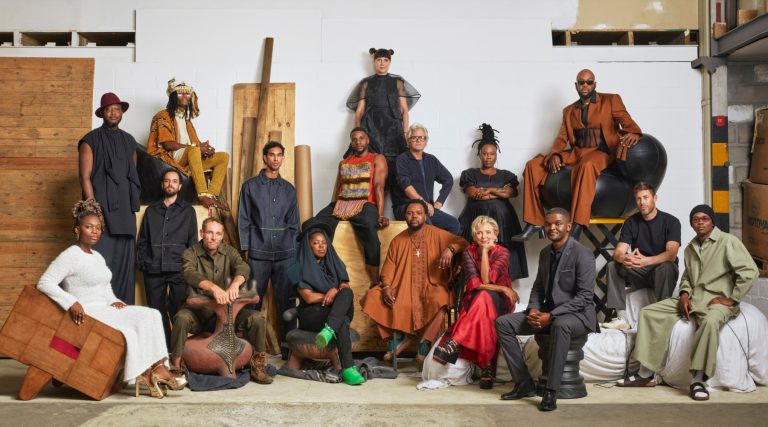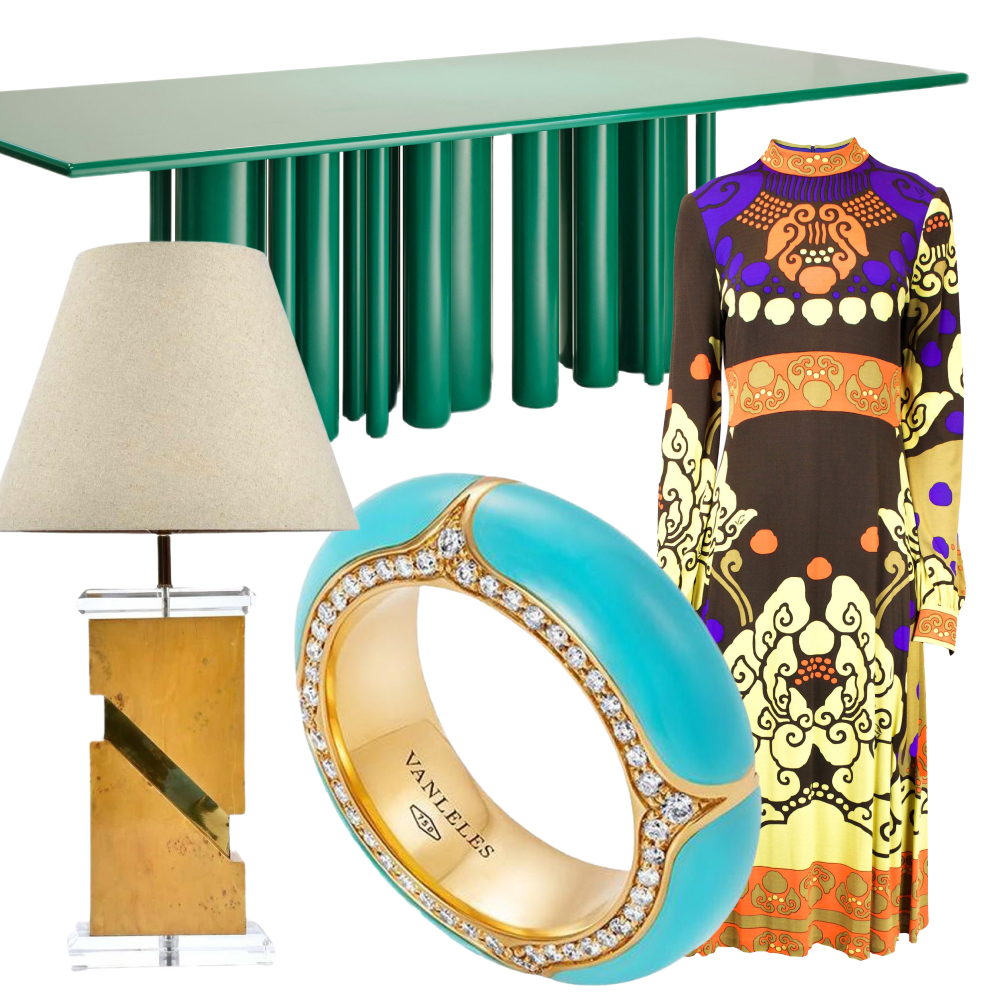
August 13, 2014A 1992 portrait of Bernhard by John Swannell. All Bernhard photos © Estate of Ruth Bernhard, courtesy of Peter Fetterman Gallery. Top: Perspective, 1967
It is not easy to photograph a woman positioned inside a cardboard box and still manage to grant her dignity, sensuality and strength. It’s even harder to do so when the woman also happens to be nude. But Ruth Bernhard managed to achieve that peculiar balance of vulnerability and equanimity in her celebrated 1962 photograph, In the Box, Horizontal.
Exquisitely printed with rich shades of black for the box’s cavity, the silver gelatin image shows a woman reclining on her back in a long cardboard box, top open to the viewer, legs folded under her body. One knee skims the inside of the container, while her elbow bends over its opposite edge. Her eyes are closed; her face is as serene as a Brancusi sculpture.
The outstretched arm and relaxed expression underscore the model’s power: this woman controls the box, the box does not control her. “I never felt uncomfortable, even when I had to stay in the same position for half an hour,” says the model, Joyce Pieper, now 83. “It always felt like a collaboration — I would refine the pose, moving a hand here or foot there, and she would work on the lighting for hours.”
When Richard Avedon photographed a beautiful woman, there was a seduction going on,” adds Peter Fetterman, Bernhard’s longtime dealer in Santa Monica, California. “But with Ruth there was a greater tenderness, more intellectual insight and not the same intense eroticism.”

Two Leaves, 1952
Bernhard’s photos went beyond nudes to include still lifes and architecture, all of which are on display in “Ruth Bernhard: The Eternal Body” (through September 13), Fetterman’s seventh exhibition of her work in 20 years. As these images show, along with an eye for the natural angles of a woman’s body, Bernhard also had a flair for capturing stark modernist geometries, from a Frederick Kiesler–designed movie theater in New York to her own arrangement of Lifesavers on a table. And she found in natural objects like leaves and seashells some of the same unfussy beauty as she did in the human form.
She lived by her nudes, those are the images that really sold,” says British-born, Seattle-based photographer Michael Kenna, who worked as Bernhard’s assistant and printmaker for eight years starting in 1978. “But I personally love the seashells, the shadows, the early picture of Lifesavers.”
Kenna says she would bring an unusual sense of wonder to these everyday objects. “So many photographers become businesslike as they mature. But she kept a childlike naiveté and passion in the way she interacted with the world up until the end.”
Born in Berlin in 1905, Bernhard died at age 101 in 2006 in San Francisco. (She left her archive to Princeton University.) According to her biographer, Margaretta K. Mitchell, she deliberately avoided marriage and children to escape the fate of her parents, who had married young and divorced when she was only two.

A 1977 portrait of Bernhard by her biographer, Margaretta Mitchell
Bernhard was sent away to be raised by teachers — “a pair of sisters in their forties,” she called them — but her father welcomed her at age seven into the lavishly appointed home in Berlin he shared with his new wife and children. Her relationship with her mother, however, never fully recovered, and consisted only of rare visits in which Bernhard posed as a friend’s daughter so as not to upset her mother’s new family.
Once dubbed the “Father of the German Poster,” Lucian Bernhard was a highly successful graphic designer who worked in advertising as well as publishing, where he created typefaces still in use today, such as Bernhard Modern. While describing him to Mitchell as “a distant figure, so unattainable,” she credited him with giving her a model of a working artist, mostly at home in his studio.
Her father also paved her way into photography in a few key ways. He sent her to the Academy of Fine Arts in Berlin to study calligraphy and lettering as well as fine art more broadly. In 1927, he invited her to join him in New York. She soon landed a job as a darkroom assistant at Delineator, a magazine run by one of her father’s friends, and she would spend the rest of her life in the United States.
“When Richard Avedon photographed a beautiful woman, there was a seduction going on. But with Ruth there was a greater tenderness, more intellectual insight and not the same intense eroticism.” — Peter Fetterman

Lifesavers, 1930
In New York, she was also making her own work, most notably by procuring humble household objects (she called them “treasures”) at her local five-and-dime store and forming them into startling, and startlingly beautiful, geometric patterns, which she then photographed. She would arrange paper clips for one shot, straws for another, and those Lifesavers, an image in the Fetterman show, for a third. Published by magazines like Advertising Arts, this series led to commercial work.
Yet by many accounts, Bernhard didn’t take herself seriously as an artist until meeting Edward Weston on a California beach in 1935. She was visiting Santa Monica with the industrial designer Kem Weber, a family friend, when he spotted Weston, in pink satiny bathing trunks, in the water. Weber introduced the two photographers.
Bernhard went to Weston’s studio in Santa Monica Canyon soon after and called the visit a complete revelation. “His photography allowed me to accept my own work at a higher value,” she said. “It was as if I were hearing the music of Bach for the first time. It was overwhelming, engulfing my whole being.”

Classic Torso with Hands, 1952
Their relationship was romantic according to many contemporaries, but Bernhard said it was never consummated, as they sought to maintain their creative connection. The fact that she mainly dated women at the time might have also played a role, as it certainly did later on when she moved to San Francisco in 1948 with her then-partner, artist Evelyn Phimister.
In the early 1950s, by which time Phimister had moved back to New York, Bernhard got to know several photographers in the Bay Area, attending cocktail parties thrown by Ansel Adams and meeting Minor White, Wynn Bullock, Dorothea Lange and Imogen Cunningham.
Her work is often compared to theirs, sharing something of Adams’s interest in tonal drama and Cunningham’s sparse presentations of nudes. But the most obvious point of comparison is Weston, for his precision of printing and sensual ripeness of forms. (Though Weston clearly preferred fuller-bodied models for his work.)
Bernhard also played the role of nature poet or natural philosopher along with the best of them, full of insights into the interconnectedness of all living things that she would share with workshop students. She taught with a bowl of beans nearby, holding one carefully while discussing the individual’s “potential to grow and live more fully.” Or she would bring out an egg — “the most perfect form in nature,” she said. “Most people think they look alike. They do not!”

“She kept a childlike naiveté and passion in the way she interacted with the world up until the end,” says Michael Kenna of Bernhard, seen above at age 95 (photo by Mona Kuhn); the artist penned the life lessons at left in 1995.
Bernhard stopped taking photographs in 1976, after a near-lethal case of carbon monoxide poisoning from a faulty water heater left her unable to focus. But she continued to lead workshops and hired assistants like Kenna and Saïd Nuseibeh to develop her prints, which began gaining critical attention around that time.
Kenna describes her as particularly resourceful in the darkroom, whether throwing one section of an image out of focus by deliberately tipping the easel holding the developing print, or figuring out ways to work with damaged negatives. And she often sought out different ways to interpret a single negative by rethinking the print’s tones.
“I believe it’s because of printing with Ruth that I began to think anything was possible in the darkroom,” says Kenna, who is also represented by Fetterman. “It enabled me to print negatives that I had completely given up on in my own work.”
One example: The negative of Kenna’s well-known 1977 image Broughton Castle, really a marshy landscape with the hint of a castle in the background, had been scratched. To fix it, he borrowed a trick from Bernhard — a particular technique that, much like her career, has its roots in the human body. “She would take a little grease from the outside of her nose and rub it into the emulsion and somehow the scratch disappeared,” Kenna explains. “She would do miracles with her negatives.”






